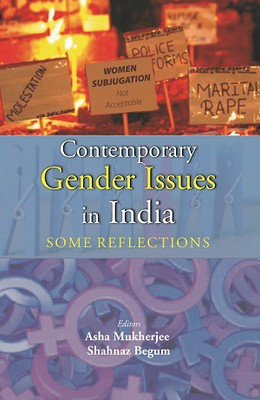Contemporary Gender Issues in India: Some Reflections(Hardcover, Asha Mukherjee, Shahnaz Begum)
Quick Overview
Product Price Comparison
The status of women in India has undergone considerable change in last three decades. Though, Indian women in cities are now far more independent and aware of their legal rights, such as right to work, equal treatment, property and maintenance, still amajority of women in India remain unaware of these rights especially in rural set-up and even if they are aware, hardly exercise these opportunities. There are other factors that affect their quality of life such as age of marriage, extent of literacy, role in the family, culture, tradition and so on. In many of the Indian families, women still do not have a voice in most of the decision making. The gender disparity is also a cause for worry due to unbalanced development taking place in India. The status of women has become a matter of serious concern in India and the traditional role of a woman as mother and nurturer needs to be reviewed; this has been insisted by the feminist in India just as anywhere else. The family for a women matters a lot in India (even today) and so do women for a family. The woman of the family binds everyone, looks after every member of the family, provides care, solves money problems in crisis but what she gets in return? Does she have any right to demand care for herself? Does she have a right to a dignified living within her family? Does she get due respect, love and affection in return from her family members and from the larger society? By and large, it is argued in the book, that it is due to their own and society's deep rooted patriarchal convictions coming from their own traditions and cultures that women do not exercise their rights provided by the law. The attitudinal change is much more needed and if the rights of women are recognized as valid and some obligations towards betterment for women are recognized by the society at large, the change of status of women would be faster. The eleven papers in this book present the various ways in which a limited part of Indian society has


